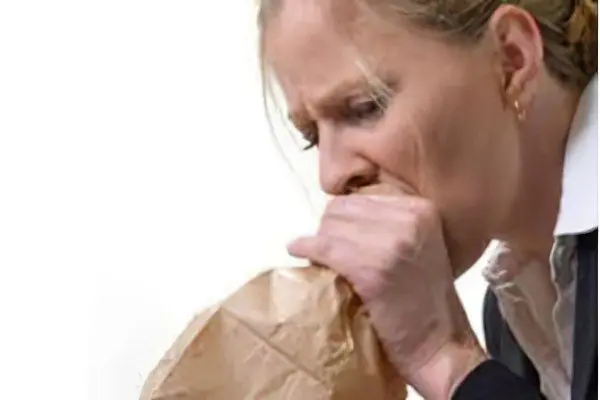Contents

An attack of VVD is a pronounced manifestation of such a functional disorder as vegetovascular dystonia. The crisis is characterized by a violation of the heartbeat, sweating, headache and / or heart pain, as well as other individual symptoms. Attacks of dystonia not only significantly worsen the quality of life of a person, but also carry a certain threat – for example, an unexpected loss of consciousness, a sharp increase in blood pressure, the development of persistent neuroses.
By itself, VVD is not a disease, but just a failure of autonomic nervous regulation. However, with a combination of certain factors, this functional disorder can cause the development of many dangerous conditions. If there is no treatment for VVD, then the attacks will become more frequent, and their manifestations will become more pronounced over time.
Specialists call attacks of dystonia crises, which characterizes the severity of the patient’s condition at the time of exacerbation.
Symptoms of an attack of VVD

An attack of vegetative-vascular dystonia can proceed in different ways. It depends on what type of disease develops. The following options are possible:
Hypertensive attack of VVD. It is also called sympathoadrenal crisis:
Arterial pressure rises sharply. The systolic index can reach 140-180 mm. rt. Art.
The heartbeat increases to 140 beats per minute.
There are severe headaches that have a pulsating character.
Perhaps an increase in body temperature to febrile levels.
Other symptoms of an attack: increased sweating, redness of the face and neck, chills, trembling in the limbs, general weakness.
Hypotensive attack of VVD or vagoinsular crisis:
Arterial pressure drops sharply. Its upper limits can remain at around 80 mm. rt. Art.
The heart rate also decreases.
A person has a feeling of lack of air, a sensation of a lump in the throat may appear. This causes a panic fear of imminent death.
Other symptoms: dizziness, lethargy, weakness, pain in the abdomen and in the heart area, nausea and vomiting, loss of consciousness, pallor of the skin.
Cardiac attack VVD:
Pain in the region of the heart.
An increase or decrease in heart rate.
A person begins to clearly feel the beating of his own heart, which normally should not happen.
The patient has a panic fear of imminent cardiac arrest or rupture.
Vegetative-vestibular:
The onset of the attack is abrupt, accompanied by vomiting.
There is severe dizziness.
Blood pressure either rises or falls sharply.
Depending on the severity of the attack, its duration will vary. A mild crisis takes about 5 minutes, and severe attacks can last for 4-8 hours. After their completion, a person has post-crisis asthenia for a long time, which can haunt him for several days.
Causes of seizures with VVD

The mechanism of the development of an attack on the background of dystonia is explained by an increase in the concentration of adrenaline, steroid hormones and acetylcholine in the body.
Factors that can provoke another crisis are:
emotional overload;
Physical fatigue;
Poisoning of the body;
Violation of the usual daily routine;
Overheating or hypothermia;
Injury;
Exhaustion on the background of a diet or after a serious illness.
Is it possible to cope with an attack of VSD on their own?

If a person knows about the problems he has in the functioning of the autonomic nervous system, then in some cases he is able to cope with attacks of the disease on his own. When the crisis has a mild course, then you can try to normalize your well-being at home. The main thing to remember is that an attack of VVD does not pose a threat to life, and fear only aggravates its course. In case of a protracted crisis, it is necessary to consult a doctor.
Algorithm of actions to be taken in case of an attack of VVD:
First of all, it is necessary to eliminate the factor that provoked the attack. Often it is caused by a strong emotional shock, fear, quarrel or other external stimulus that affects the nervous system.
A person needs fresh air. To do this, you need to open a window or window, unbutton the collar on your shirt, remove any items of clothing from your neck that contribute to respiratory failure.
With an increase in blood pressure, you can put a tablet of Captopril (0,25 mg) under the tongue and dissolve.
With a decrease in blood pressure, you need to take a tonic, for example, tincture of Eleutherococcus, or drink a cup of coffee. Get rid of dizziness will help Betaserc 8-24 mg, 2-3 times a day.
It is necessary to lie down, this will improve cerebral circulation and reduce the negative manifestations of the crisis. If this is not possible, then you need to take a sitting position. This will help avoid injury in case of fainting.
If a migraine attack develops, then you should go to a quiet place where there are no external stimuli such as bright lights or loud noises.
A warm blanket or hot water foot bath can help relieve the chills.
Sudden weakness helps to get rid of sweet food. Therefore, you can eat a candy or suck a spoonful of honey in your mouth, washing it down with weak tea.
It is necessary to try to take control of your emotions, try to calm down, think about something abstract. Scientists have found that mental visualization of winter landscapes effectively eliminates nervous tension.
When it is not possible to cope with the excitement on your own, you should take a sedative. It can be an extract of valerian or motherwort.
You can drink a glass of water, but not in one gulp, but in slow sips.
You can close your eyes and massage the covered eyelids with your fingertips.
Breathing in the stomach, massage of the temporal region and fingertips helps to cope with excitement.
If you can’t cope with the symptoms of a crisis on your own, then you need to call an ambulance team.
It should be understood that without professional treatment, VVD attacks will become more frequent and gain strength. Therefore, you need to visit a neurologist and together with him choose the optimal treatment regimen. In addition, the doctor will tell you how to behave during the next crisis and with what drugs you can normalize your own condition. It should be noted that poor-quality first aid during an attack will lead to its protracted course.









